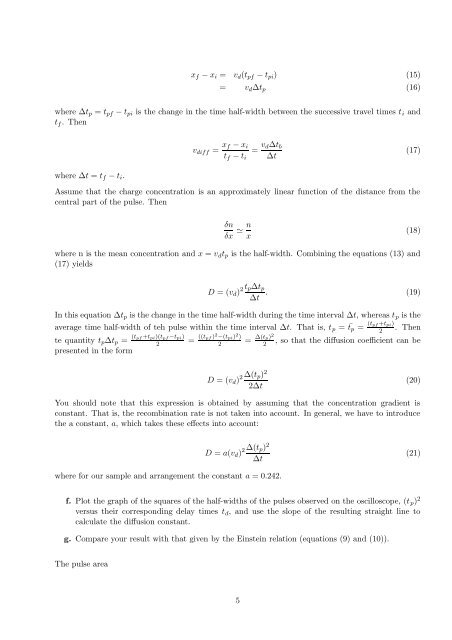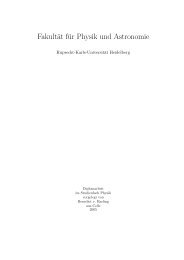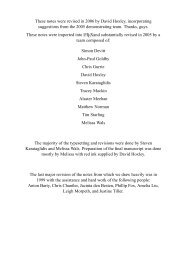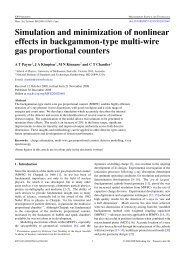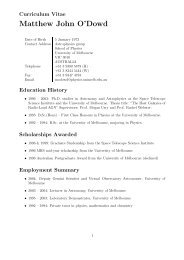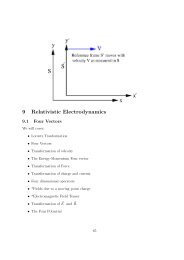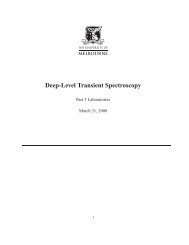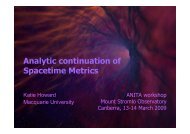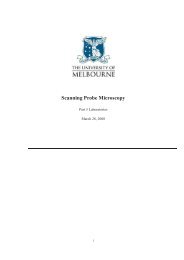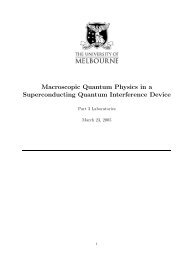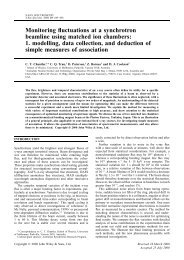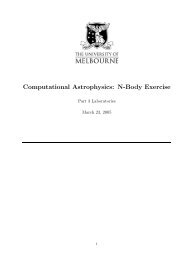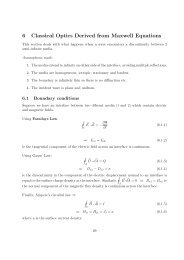1 Introduction 2 The Haynes-Shockley Experiment
1 Introduction 2 The Haynes-Shockley Experiment
1 Introduction 2 The Haynes-Shockley Experiment
Create successful ePaper yourself
Turn your PDF publications into a flip-book with our unique Google optimized e-Paper software.
x f − x i = v d (t pf − t pi ) (15)<br />
= v d ∆t p (16)<br />
where ∆t p = t pf − t pi is the change in the time half-width between the successive travel times t i and<br />
t f . <strong>The</strong>n<br />
v diff = x f − x i<br />
t f − t i<br />
= v d∆t b<br />
∆t<br />
(17)<br />
where ∆t = t f − t i .<br />
Assume that the charge concentration is an approximately linear function of the distance from the<br />
central part of the pulse. <strong>The</strong>n<br />
δn<br />
δx ≃ n x<br />
(18)<br />
where n is the mean concentration and x = v d t p is the half-width. Combining the equations (13) and<br />
(17) yields<br />
D = (v d ) 2 t p∆t p<br />
∆t . (19)<br />
In this equation ∆t p is the change in the time half-width during the time interval ∆t, whereas t p is the<br />
average time half-width of teh pulse within the time interval ∆t. That is, t p = ¯t p = (t pf +t pi )<br />
2<br />
. <strong>The</strong>n<br />
te quantity t p ∆t p = (t pf +t pi )(t pf −t pi )<br />
2<br />
= ((t pf ) 2 −(t pi ) 2 )<br />
2<br />
= ∆(tp)2<br />
2<br />
, so that the diffusion coefficient can be<br />
presented in the form<br />
D = (v d ) 2 ∆(t p) 2<br />
2∆t<br />
(20)<br />
You should note that this expression is obtained by assuming that the concentration gradient is<br />
constant. That is, the recombination rate is not taken into account. In general, we have to introduce<br />
the a constant, a, which takes these effects into account:<br />
D = a(v d ) 2 ∆(t p) 2<br />
∆t<br />
(21)<br />
where for our sample and arrangement the constant a = 0.242.<br />
f. Plot the graph of the squares of the half-widths of the pulses observed on the oscilloscope, (t p ) 2<br />
versus their corresponding delay times t d , and use the slope of the resulting straight line to<br />
calculate the diffusion constant.<br />
g. Compare your result with that given by the Einstein relation (equations (9) and (10)).<br />
<strong>The</strong> pulse area<br />
5


